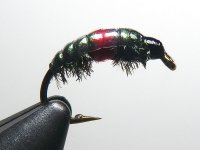Heritage-Angler
Active member
- Joined
- Sep 11, 2006
- Messages
- 3,307
A lot of people have no problem going to great lengths to immitate size, shape, and color of mayfly emergers/duns/spinners with their immitations.
Why does this mindset suddenly change when they tie their nymph immitations?
Why does this mindset suddenly change when they tie their nymph immitations?





